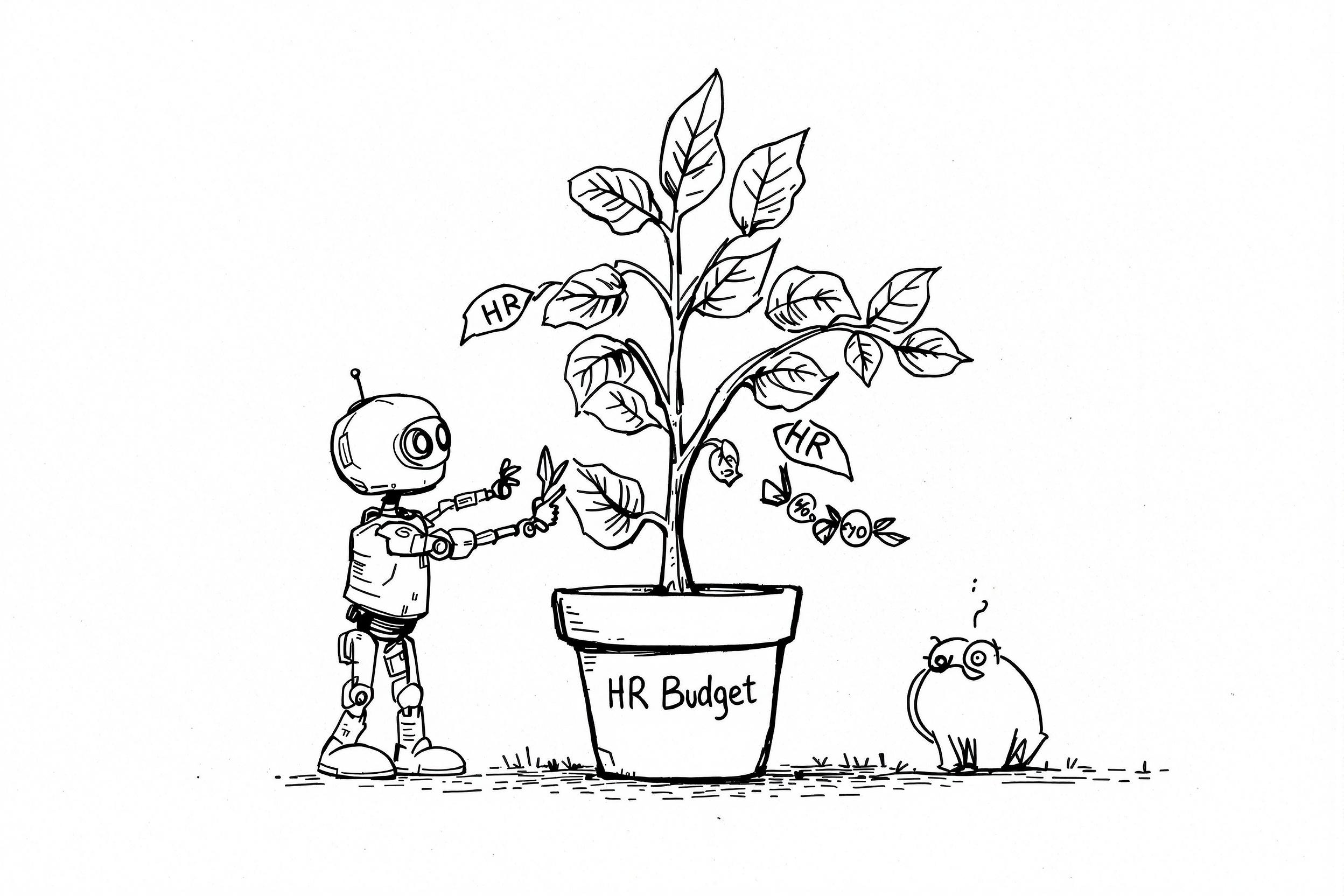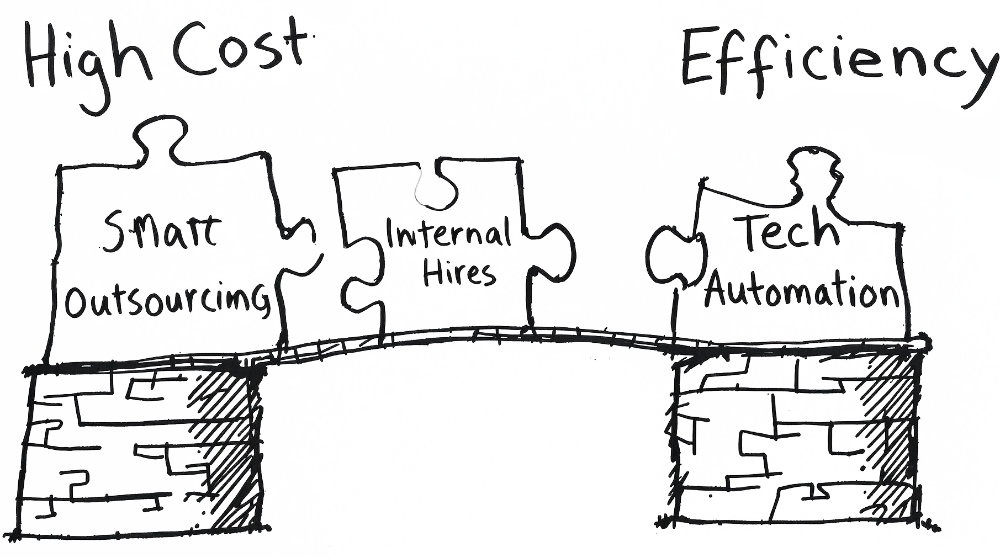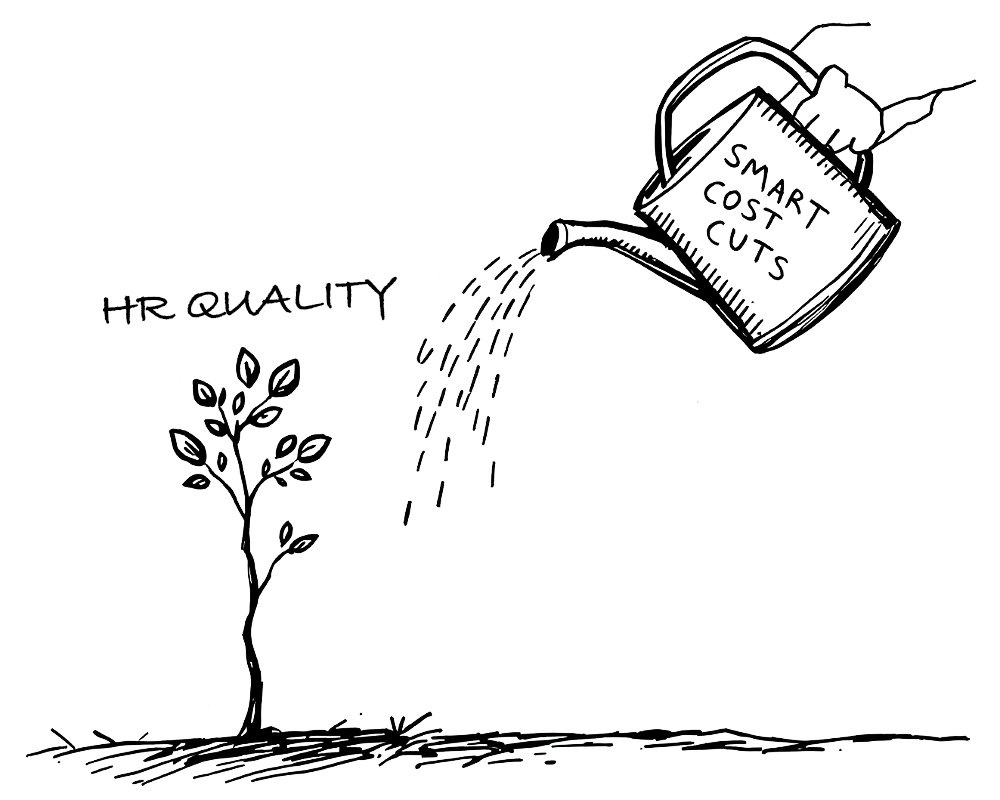Early one morning, I watched a CFO pinning sticky notes on a glass wall, each one representing an HR function. Some were big-ticket items—external hiring costs, specialized trainings—while others were small but numerous, like subscriptions to unused tools or poorly structured benefits plans. The CFO’s face showed a mix of curiosity and caution. The goal? Save money without eroding the quality that the entire organization relied upon.

Why This Matters Now
If you’ve been following workforce trends, you know the tension. It’s one thing to cut costs—anyone can slash budgets—but doing so without harming the talent pipeline or employee experience is trickier. Today’s employees expect competitive treatment, and top candidates won’t stick around if you remove the elements that make their work rewarding.
Yet the mandate from the C-suite is clear: tighten the belt. Fortunately, cost reduction doesn’t have to mean settling for mediocrity. Savvy executives can reimagine HR strategies to trim expenses while actually enhancing overall workforce quality. Sound impossible? It’s not. It just requires a shift in mindset: less about panic-driven cuts, more about targeted optimization.

A Different Kind of Efficiency
One manager once confessed: “When we first tried to cut HR costs, we reduced training budgets and froze wages. Turnover skyrocketed.” This is a classic mistake—chasing short-term savings at long-term expense. Real efficiency recognizes that employees are complex organisms, not line items. So, what’s the alternative?
Think of cost cutting as focusing on value density. Every initiative, every platform, every consultant fee should justify its existence by either building skill, improving productivity, or retaining valuable talent. If it doesn’t, it’s a candidate for pruning. This approach reduces waste without undermining what makes the organization strong.
Begin with Core Value Metrics
You can’t make good cuts if you don’t know where the real value lies. Start by asking: Which HR activities truly fuel our growth and performance? Which perks keep our best employees engaged? Where do we gain a competitive edge—streamlined onboarding, tailored training, or strong internal mobility?
A data-driven approach clarifies the picture. Use HR analytics to identify correlations: higher retention with certain benefits, improved performance after specific training sessions, faster hiring via certain channels. Armed with this evidence, you can safeguard what works and trim the rest. Tools like Machine Hiring, for instance, can help you leverage internal data to identify which positions could be filled internally, reducing expensive external recruitment.
Internal Hires and Upskilling: The Underestimated Allies
External recruitment is pricey, with agency fees and the hidden cost of onboarding strangers to the company culture. Meanwhile, internal hires—employees who know the ropes—hit the ground running. By nurturing existing talent, you avoid hefty external search costs and reduce risk.
Offer structured career paths. Introduce mentorships. Build an internal job marketplace so employees can find new roles without leaving. Upskilling or reskilling employees costs money, yes, but it often results in net savings by reducing turnover and external hiring fees. This strategy also boosts morale. Talented individuals stay because they see a future. That’s cost optimization that pays off in loyalty and performance.
Again, this is where Machine Hiring can help. It can help you identify which positions could be filled internally, reducing expensive external recruitment.
Rethinking Training: Less Bulk, More Precision
Remember the old days of marathon training sessions that felt more like corporate tourism than skill-building? Those can be prime targets for cost reduction. Instead, deliver training in smaller, flexible formats—bite-sized e-learning modules, peer-led workshops, on-demand video tutorials. Focus on what’s immediately relevant.
This precision approach reduces overhead while improving impact. A short module tailored to a team’s actual challenge beats an expensive, generic two-day seminar. You pay less for content nobody uses and improve practical knowledge transfer. It’s leaner and stronger at once.
Technology That Pays Its Way
A human resources management system (HRMS), applicant tracking tool, or analytics platform promises efficiency. But do you really need all those expensive features? Evaluate if
your current HR tech stack overlaps or if it’s delivering less than it should. Are you paying monthly for a tool that no one fully understands?
Look for automation opportunities in administrative tasks—payroll, benefits enrollment, scheduling. Free HR staff from repetitive chores so they can focus on strategic activities. Even the right AI-driven applicant tracking systems can streamline hiring. If the tool cuts time-to-hire and prevents the need for costly external recruiters, that’s tangible value.
I once saw a company cancel three software subscriptions and replace them with a single integrated solution. Not only did they save money, but the HR team finally had one place to manage talent data, cutting confusion and errors. Efficiency doubled at half the cost.
Smart Outsourcing, Not Reckless Offloading
Outsourcing can look like a quick fix: offload payroll, benefits administration, or compliance tasks to specialized providers. But do it wisely. If you outsource a function you barely understand, you risk losing control and spending more on oversight and revisions. However, when done carefully—outsourcing repetitive tasks to a reliable partner—organizations free internal staff for strategic initiatives.
Where this works best is with tasks where external providers excel due to scale and expertise. Payroll vendors, compliance consultants, or benefits brokers might offer services at a lower total cost than maintaining an internal team for the same. Just ensure you set clear performance metrics and monitor them, so you don’t sacrifice quality.
Flexible Work Arrangements: Unexpected Savings
It’s not just about remote work policies—though those can save on office costs. Flexibility, whether in hours or locations, can reduce turnover and associated hiring costs. An employee who might quit for a more flexible job stays put, saving you the expense of replacing them. Also, by hiring remotely, you can find talented professionals in regions where salary expectations align with your cost goals.
This isn’t about lowballing talent. It’s about broadening your reach so you’re not forced to overpay in overheated local markets. If a high-quality candidate lives in a city with lower living costs, offering a fully remote role can be a genuine win-win: you save on salary overhead, they enjoy a stable position at a rate that feels fair to both sides.

Leveraging Data for Predictive Moves
By analyzing exit interviews, performance metrics, and engagement surveys, you can predict where future HR costs might spike—rising turnover in a certain department, for instance—and intervene before it gets expensive. Early intervention might mean coaching managers who struggle with feedback, adjusting workloads to prevent burnout, or revising compensation structures for key roles.
Predictive analytics turns you from a reactive cost-cutter into a proactive strategist. Instead of knee-jerk reductions, you make well-aimed adjustments that preserve quality and satisfaction. In a volatile market, this foresight is pure gold.
Encouraging Employee Input
Surprisingly, employees often know exactly where waste happens. Maybe a benefit no one uses. Maybe a convoluted process that requires unnecessary approvals. Invite them into the conversation. Set up a simple suggestion channel or a quick survey: “Where can we improve efficiency without harming what you value most?”
This isn’t just good PR. It’s practical. Employees on the ground level see inefficiencies every day. By acting on their insights, you gain trust and uncover hidden cost-cutting opportunities that might have gone unnoticed. Every dollar saved here is a dollar that can be invested in skill development, retention incentives, or better tools.
Renegotiating Supplier Contracts
Contracts with benefit providers, training vendors, or recruitment agencies are often legacy agreements. Revisit them. Market conditions change, new competitors emerge. Push for better terms, volume discounts, or package deals. Maybe bundle multiple services under one provider for a reduced fee. Your leverage: a willingness to centralize spending rather than scatter it.
This is about using your purchasing power intelligently. If you’re a midsize company paying premium rates to multiple vendors, consolidating might save not just money but complexity—fewer invoices, less admin, and a clearer line of accountability.
Environmental Considerations as a Cost Lever
Sometimes a simple measure—going paperless, optimizing energy use in office spaces, rethinking commute benefits—can trim operational costs that indirectly weigh on HR budgets. Less spending on office maintenance, travel reimbursements, or printed materials frees resources you can channel into better digital onboarding tools, mental health resources, or leadership training.
Think of these environmental efficiencies as hidden cost buffers.
They allow you to maintain or even enhance HR quality by making other parts of your operation leaner.
Creative Approaches to Benefits
Not all benefits need to be expensive subsidies or gym memberships. Some employees might value extra time off, mentorship from leaders, or access to online learning platforms more than cost-heavy perks. Get creative and tailor benefits to what truly supports their well-being and professional growth.
This can reduce total expenses if you phase out underutilized perks and replace them with lean, more impactful options.
For example, replacing a costly annual conference trip with a curated list of online courses and periodic virtual meetups with industry experts could be cheaper and more inclusive. Everyone can benefit, not just the team members who win the annual conference lottery.
The Long Game: Linking Cost Reduction to Quality
Cutting HR costs without sacrificing quality is not a one-time project. It’s an ongoing discipline that requires checking in with your strategies, measuring outcomes, and adjusting accordingly. Over time, these improvements compound. Smaller budgets don’t have to mean weaker HR outcomes. Often, it means more intentional allocation.
It’s a shift from a mindset of scarcity—where you fear losing ground—to a mindset of optimization—where every expense competes for its right to remain. Eventually, your HR function becomes a well-calibrated machine, delivering top-tier employee support at a sustainable cost.
Celebrating Wins and Sharing Stories
Sometimes, success here looks subtle: a drop in turnover, an uptick in engagement, a faster hiring cycle that doesn’t break the bank. Recognize these wins. Share the story with the organization. When employees see that cost optimization doesn’t have to mean suffering, they’ll trust future initiatives more. This trust is currency—spend it wisely.
And if you’re still uncertain? Start small. Maybe begin by consolidating recruitment software or piloting an internal mobility program. Evaluate the results, then expand. Over time, you’ll develop a playbook for cost efficiency that actually strengthens, not weakens, your workforce quality.
Bringing It All Together
Cost management and HR quality needn’t be enemies. When aligned strategically, they create a stable, productive workforce that’s both affordable and high-performing. With the right blend of internal promotions, precision training, wise outsourcing, flexible work policies, data-driven decision-making, and careful vendor management, you reduce expenses without hollowing out the soul of your organization.

That CFO I mentioned at the start eventually found her path: she redirected spending from underused benefits into a robust internal skill-building platform. The result? Lower external hiring costs, more engaged employees, and a leadership team pleasantly surprised that cost cutting need not be grim. By following a similar path, you, too, can find savings that lead not to mediocrity, but to sustainable improvement.
Ready to start cutting HR costs without sacrificing quality? Get started with Machine Hiring today.
Related Posts
- Stop the Turnover Epidemic: Proven Tactics Every HR Leader Must Know – Stop watching talent walk out the door: battle-tested retention strategies that won’t drain your budget
- Attracting Top-Tier Talent in a Highly Competitive Labor Market – Beyond the bidding war: smart ways to win top talent without breaking the bank
- Effective Talent Acquisition Methods – The art of lean recruiting: proven techniques that deliver quality hires for less
- How to Align the HR Strategy with the Company’s Long-Term Business Objectives – Where strategy meets savings: crafting an HR roadmap that drives both efficiency and excellence


